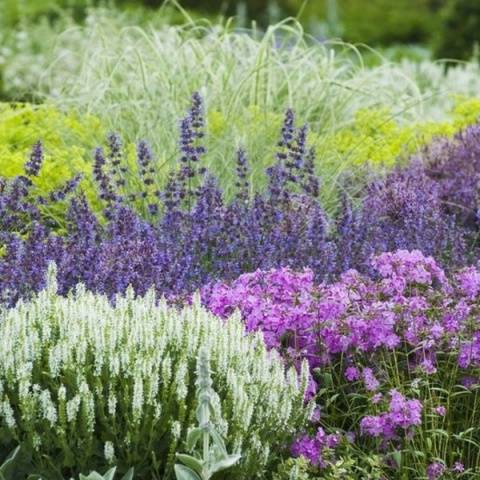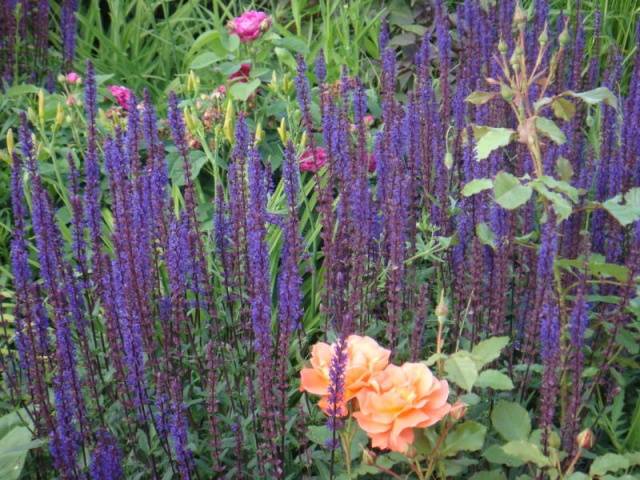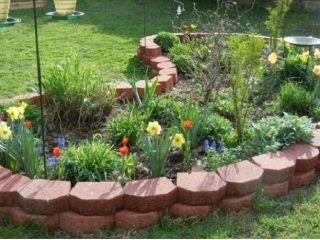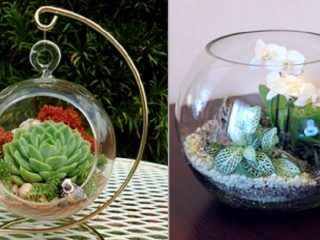Content
Low-growing perennials are a universal “tool” for an experienced gardener. These flowers complement landscape compositions, are successfully combined with garden and vegetable crops, and are used as borders, ridges and other dividing structures.
Almost everyone is short perennials bloom throughout the summer. Flowerbeds with them look well-groomed and remain spectacular even without regular care or annual replanting.
Low-growing flowers are very unpretentious, but even they need to be able to choose correctly. You can learn about the varieties of perennials and their characteristics from this article.
Varieties of low-growing perennial flowers
Perennial flowers for the garden can come in different sizes. Low plants are divided into a separate group, which, in turn, are divided into:
- ground covers;
- low-growing perennial flowers;
- a dwarf subspecies of flowering perennials.
If ground covers literally creep along the ground, covering it from the sun, wind and cold, then low-growing and dwarf flowers have longer stems, often their height does not exceed 70 cm.
Besides this division, low perennial plants for the garden come in flowering and non-flowering varieties. In the first case, the decoration of the garden will be the inflorescences that flowers perennials, as a rule, are decorated for two to three months, that is, almost the entire season. Non-flowering group - plants with beautiful decorative shoots, leaves of interesting shape or unique color. Both flowers are often used by landscape designers and ordinary gardeners.
The purpose of perennial low plants
short perennials help gardeners solve many problems. After all, these flowers:
- do not require constant and complex care;
- no need to water regularly and abundantly;
- They only need one or two feedings per season;
- easily seated, transferred to another place and divided;
- they grow quickly and begin to bloom already in the first or second year after planting;
- can bloom all season;
- go well with other species and varieties of plants, as well as with trees and even garden crops;
- take root on different soils; there are varieties of perennial flowers for sandy or rocky soil.
Choosing a variety of low-growing perennial flower for the garden
Picking up perennial flowers for a summer cottage or suburban area, it is necessary to take into account the compatibility of plants intended for one flower bed or landscape composition.
Perennials must meet the following requirements:
- Frequency and method of watering.
- Growth rate.
- Height of bushes.
- Suitable soil composition.
- Fertilizers and frequency of their application.
- The need and method of shelter for the winter period.
- Love for sun or shade.
Astrantia large
This low-growing flower grows no higher than 70 cm. Spreading bushes are covered with flowers already at the beginning of summer, ends Bloom by the end of August. In order for new inflorescences to constantly appear on the bushes, it is necessary to remove faded flowers in time.
The color of the flowers of this perennial can be absolutely anything - today there are many varieties of astrantia, there are even bushes with multi-colored buds. But more often you can find a short one perennial with white flowers, soft pink or burgundy shade.
It is better to plant a perennial plant in the sun, but a slightly shaded area, for example, a trellised shade from a gazebo or hedge, is also suitable. The low-growing plant is unpretentious when it comes to soil and care - astrantia can grow anywhere.
Oak sage
Sage (or salvia) is also a low-growing perennial that blooms throughout the summer. The bushes grow about 60-80 cm, sage is not spreading, but is a rather compact perennial.
The inflorescences of this perennial plant are very spectacular - long candles of a beautiful purple color. You need to plant sage in the shadow, choosing areas with fertile and slightly moist soil.
The perennial requires care. It is very important to maintain constant soil moisture around the bush, loosen the soil in a timely manner, apply complex fertilizers, protect from pests and weed. But as a result of painstaking work, sage will reward you not only with beauty, but also with health, because it is a well-known medicinal plant that saves you from many ailments.
Armeria seaside
This perennial has about ten varieties, all of them differ in appearance and characteristics. But, in principle, this plant is quite unpretentious. Armeria does not need to be watered often; any soil is suitable for the plant, even clay and sandy soil. Armeria will also successfully decorate rocky rockeries or rock gardens.
The flowering of this low-growing perennial continues all summer, and photos of the bushes can be seen below.
Alyssum marine
A very tenacious and persistent perennial. The height of the bushes does not exceed 20 cm, strong stems literally crawl along the ground, decorating it with lush flowering.
Alyssum blooms for a very long time: the first inflorescences appear in May, and the last flower can withstand even slight frosts. In regions with mild winters, the perennial does not die off, but continues its growth and development with the first rays of the spring sun.
But even in cold climates, the perennial does not need shelter; the plant will withstand even severe frosts. The color of the flower stalks can be any: white, yellow, pink, purple.
Arenaria purpurea
An ideal perennial for rockeries and alpine slides. This flower is so unpretentious that it can grow on sand or stones. The height of the stems does not exceed 15 cm, and the shoots of the perennial are painted crimson.
The inflorescences can be soft pink or white. They are made in the shape of small stars.Arenaria blooms in early June and continues to bloom until late autumn.
The perennial does not require any special care; it doesn’t even need to be watered - the arena tolerates drought well.
Perennial chrysanthemum
A well-known and very common plant. This perennial is especially loved by Russian gardeners, mainly because it tolerates winter well.
Chrysanthemums begin to bloom somewhat later than other perennials - often in the second half of summer. But these flowers are one of the few that continue to bloom until the first severe frost.
There can be many shades and shapes of inflorescences - there are many varieties of perennial chrysanthemums.
Balkan geranium
That type of perennial plant that does not shed its leaves even in winter, so it can decorate the garden all year round. The height of the perennial bushes reaches 25 cm, the bushes are decorated with carved leaves of a rich green hue. In autumn, the foliage turns yellow and may even turn red - it looks very impressive.
Geranium flowering begins in June and continues until the end of the summer season. All this time, a very delicate floral aroma spreads throughout the garden. The color of the peduncles is red or purple.
Highlander related
This is another low-growing perennial that will be a worthy addition to any garden. The leaves of the bushes are lanceolate, and the inflorescences have the shape of a spike. The flowers are colored light pink or purple.
A distinctive feature of the perennial is that it does not shed its leaves in the winter, and their color does not change - the leaves remain green. The perennial finishes blooming by the end of September.
How to properly grow low-growing perennials
Like all perennial plants, low-growing flowers do not need any special care. However, in order to provide your garden with spectacular, healthy flowers, the owner will have to work a little, doing the following:
- Remove dried flowers in a timely manner so that they do not take away the strength of the entire plant.
- Protect the soil with stones or plastic (metal) sheets to prevent excessive root growth.
- Plant flowers not flush against the border or edge of the flowerbed, but at some distance. It is necessary to take into account the high growth rate of perennials.
- Using a drip irrigation system makes it more convenient to control the supply of water and fertilizers.
- Cover perennials for the winter using spruce branches or synthetic “breathable” materials.
- Select perennials so that the flowerbed will delight you with flowering from early spring to late autumn.
Each photograph of a low-growing perennial further confirms the uniqueness and effectiveness of these plants. For the beauty of perennials to shine especially brightly, these flowers do not need to be planted individually - they look great in dense group plantings.























